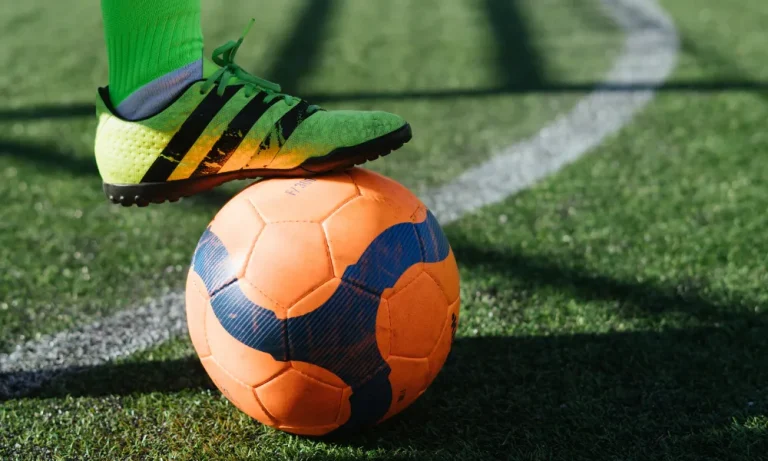Can I Play Basketball in Running Shoes?
Can you play basketball in running shoes? Many people wonder if their trusty running shoes can double as basketball shoes. In this article, we’ll delve into the compatibility of these two types of footwear. While running shoes may seem convenient, it’s important to understand the differences and potential risks involved. Let’s dive in!
Differences Between Running Shoes and Basketball Shoes
When it comes to footwear, running shoes and basketball shoes may seem similar at first glance. However, they are designed with specific sports in mind, and understanding their differences is crucial.
1. Design Differences
Running shoes are primarily designed for forward motion, focusing on cushioning and shock absorption to reduce impact on the feet and joints. They typically have a lightweight and flexible construction to enhance running efficiency.
On the other hand, basketball shoes prioritize lateral stability and ankle support to withstand the quick and multidirectional movements inherent in basketball.
2. Cushioning and Traction
Running shoes often have ample cushioning throughout the sole to provide a comfortable and energy-efficient running experience. This cushioning is optimized for heel-to-toe transitions, which is different from the requirements of basketball, where quick stops, starts, and changes in direction are common.
Basketball shoes have cushioning systems that offer responsiveness and impact protection specifically tailored to the demands of the game.
Additionally, basketball shoes have outsoles with unique traction patterns to provide grip on the court. These patterns help players make sharp cuts, maintain balance, and prevent slipping.
Running shoes, in contrast, have outsoles optimized for running on various surfaces, which may provide a different level of grip on a basketball court.
3. Ankle Support and Stability
Basketball involves frequent jumping, landing, and sudden changes in direction, putting significant stress on the ankles.
To mitigate the risk of ankle injuries, basketball shoes typically have higher collars and firmer materials around the ankle to provide stability and support.
In contrast, running shoes usually have lower collars and prioritize flexibility to facilitate a natural range of motion in the foot.
4. Overall Performance and Protection
While running shoes excel in providing cushioning and shock absorption for repetitive forward motion, they lack the lateral stability, ankle support, and traction required for basketball.
Playing basketball in running shoes can compromise performance, increase the risk of ankle sprains or other injuries, and hinder quick movements on the court.
Impact of Using Running Shoes for Basketball
Playing basketball in running shoes may seem convenient, but it can have several negative consequences.
1. Increased Risk of Injuries
Running shoes are not designed to provide the same ankle support and stability as basketball shoes. The rapid changes in direction, jumping, and landing involved in basketball can stress the ankles significantly. The risk of sprains, twists, and other injuries increases without proper ankle support.
Basketball shoes with higher collars and firmer materials around the ankle offer better protection and stability.
2. Compromised Performance
Running shoes have different cushioning and sole designs compared to basketball shoes. This can lead to a compromised performance on the basketball court. Running shoes may not provide the necessary traction for quick cuts, pivots, and stops, leading to reduced grip on the surface.
Additionally, the cushioning in running shoes is optimized for forward motion, which may reduce responsiveness and impact absorption during basketball movements.
3. Lack of Lateral Support
Basketball involves many lateral movements, such as side-to-side shuffling and crossover dribbles. With their focus on forward motion, running shoes may need to provide more lateral support.
This lack of support can affect stability and increase the risk of ankle rolls or other injuries when making quick lateral movements on the court.
4. Comfort and Fit
Basketball shoes are designed to provide a comfortable fit and support for basketball-specific movements. Running shoes may have a different cushioning and fit than basketball players need.
Ill-fitting shoes can lead to discomfort, blisters, or even foot pain, negatively impacting performance and overall playing experience.
Factors to Consider
While it is generally recommended to wear basketball shoes for playing basketball, there are certain scenarios where using running shoes might be acceptable.
1. Personal Preferences and Playing Style
Personal preferences and playing style are significant in choosing the right footwear. Some players may feel more comfortable and confident playing in their running shoes due to familiarity or personal preference.
If you have tried both types of shoes and find that running shoes suit your playing style better, it may be acceptable to use them for basketball.
2. Skill Level and Intensity of Play
The skill level and intensity of the game can also influence the choice of footwear. For casual or recreational players, the impact of using running shoes may be less pronounced compared to competitive players who engage in high-intensity play.
Less intense games allow for more flexibility in footwear choice, while competitive players should prioritize basketball shoes’ support and performance features.
3. Temporary Solution and Alternative Options
If you find yourself in a situation where basketball shoes are not immediately accessible, there are alternative options to consider. One option is to use cross-training shoes that balance running and basketball features.
These shoes often offer ankle support, stability, and multidirectional traction. Another option is to use ankle braces or wraps along with your running shoes to enhance ankle support and stability.
However, it is important to note that these alternatives are temporary solutions, and investing in proper basketball shoes should be a priority to ensure long-term performance and injury prevention.
Benefits of Using Basketball Shoes
Using specialized basketball shoes can offer numerous advantages when playing the game.
1. Ankle Support and Stability
One of the key features of basketball shoes is their superior ankle support. The higher collar design helps to stabilize the ankle joint, reducing the risk of sprains and twists during quick movements and jumps. This support is crucial in a basketball game, where players frequently change directions and move explosively.
2. Cushioning for Impact Absorption
Basketball shoes are equipped with cushioning systems designed to absorb the impact of landing after jumps and provide comfort during high-intensity play. The cushioning helps to reduce the stress on joints, such as knees and ankles, leading to better overall comfort and lower risk of injuries.
3. Enhanced Stability for Quick Movements
Basketball shoes are designed with stability in mind. They feature firm outsoles and specialized tread patterns that provide excellent traction on indoor courts. This enhanced traction allows players to make quick cuts, pivot, and stop confidently, minimizing the risk of slipping and improving overall stability.
4. Improved Performance
By utilizing the features mentioned above, basketball shoes can significantly enhance performance on the court. The ankle support and stability allow players to move with agility and confidence, enabling them to perform quick crossovers, explosive jumps, and precise footwork.
The cushioning and stability also contribute to better energy transfer, responsiveness, and overall comfort, allowing players to focus on their game without distractions.
5. Injury Prevention
The combination of ankle support, cushioning, stability, and traction in basketball shoes helps reduce the risk of common basketball injuries, such as ankle sprains, knee strains, and foot discomfort.
By providing the necessary support and protection, basketball shoes enable players to play with reduced fear of injury and enjoy the game to its fullest.
FAQs: Can I Play Basketball in Running Shoes?
Can I play basketball in running shoes?
While it is possible to play basketball in running shoes, it could be better. Running shoes lack the necessary ankle support, stability, and traction that specialized basketball shoes offer. This may increase the risk of injuries and hinder your performance on the court.
What are the main differences between running shoes and basketball shoes?
Running shoes are designed for forward motion and provide cushioning for repetitive impact. On the other hand, basketball shoes are designed for lateral movements and offer ankle support, stability, and traction for quick cuts, jumps, and pivots.
Can running shoes be used as a temporary alternative to basketball shoes?
If you don’t have basketball shoes, running shoes can be used as a temporary alternative. However, remember that they may provide a different level of support, stability, and traction required for basketball. Investing in proper basketball shoes for optimal performance and safety is advisable.
What are the potential risks of playing basketball in running shoes?
Playing basketball in running shoes can increase the risk of ankle sprains, foot discomfort, and slips due to the lack of ankle support and traction. The cushioning in running shoes may not be designed to handle the high impact and quick movements involved in basketball, leading to potential injuries.
How do basketball shoes enhance performance compared to running shoes?
Basketball shoes offer ankle support, stability, cushioning, and traction specifically designed for basketball movements. These features allow players to move with agility, make quick cuts, jumps, and pivots confidently, and reduce the risk of injuries. Running shoes lack these specialized features, which can impact performance on the basketball court.
Conclusion
While playing basketball in running shoes may be acceptable in certain scenarios, it is generally recommended to use specialized basketball shoes.
The ankle support, cushioning, stability, and traction features of basketball shoes provide the tools to enhance performance and reduce the risk of injuries. Invest in the right footwear and elevate your game on the basketball court.




